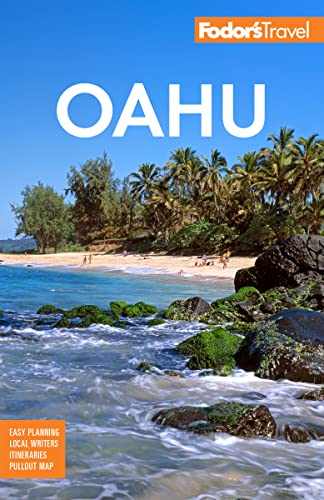About Oahu and Hawaii
Nicknamed "The Gathering Place," Oahu is the third-largest Hawaiian island, but has 75% of the state's population and is the most developed.
Development
Development remains a huge issue for all Islanders—land prices are skyrocketing, putting many areas out of reach for low-to-middle-income residents. The government, though sluggish to respond at first, is trying to make development in Hawaii as sustainable as possible.
The redevelopment of Oahu's urban Kakaako neighborhood in particular has created many new residential units but few affordable ones. That also applies to the Ward Villages redevelopment, where largely foreign investors and 1 percenters buy condos in multimillion dollar high-rises. The upside? Ward also plans new restaurants, an outdoor movie theater, yoga in the park, and playgrounds. For the last decade or so, Chinatown has been steadily revitalized with art galleries, boutiques, and trendy restaurants moving in, old buildings getting face-lifts, and a gradual reduction in crime, but with the inevitable worry that Chinatown is losing its character.
Over on the Windward side, Kailua, once a quiet bedroom community, is seeing more traffic and tourist buses than many would like. The roads into the Lanikai portion of the town’s renowned stretch of beach have gotten so busy that parking is now highly restricted. Traffic is becoming a problem on Oahu's other roads that were not designed to accommodate all the new drivers.
Homelessness
Homelessness is not the first thing that comes to mind when you picture Hawaii, but it's a major issue in the Islands, and on Oahu in particular, where most of Hawaii's homeless population is concentrated and where Governor David Ige has declared a state of emergency. The state has the highest per capita rate of homelessness in the country. In areas like Waianae, there are some well-established homeless camps. But in urban areas, the homeless shuffle between one spot or the other as they are evicted from this area or that.
Agriculture and Food
Although sustainability is an effective buzzword, 90% of Hawaii's food and energy is still imported. Until fairly recently, most of the land was used for growing pineapple or sugarcane for export, both of which have all but vanished. Emulating how their Hawaiian ancestors lived and returning to simpler ways of growing and sharing a variety of foods has become a statewide initiative. Hawaii has the natural conditions and talent to produce far more diversity in agriculture than it currently does.
Farmers' markets and partnerships between restaurants and local farmers has helped tremendously in this regard. Localized efforts such as the Hawaii Farm Bureau Federation are collectively leading the organic and sustainable agricultural renaissance. Increasingly, sustainable trailblazers enrich the culinary tapestry of Hawaii and uplift the Islands' overall quality of life in both upscale and not-so-upscale establishments.
Oahu is home to many of the restaurants and chefs leading the Hawaii Regional Cuisine food movement with a focus on fresh, local ingredients. Chinatown and Kaimuki in particular are developing into mini food meccas, with new and exciting restaurants and gastropubs. Chefs are expanding and riffing off Hawaiian Regional Cuisine, taking it into new, international, eclectic, and refreshing directions.
Tourism and the Economy
The $14 billion–plus tourism industry represents a third of Hawaii's state income, and much of that is centered on Oahu. This overdependence has caused pretty severe hardship for many Islanders as the financial meltdown of recent years affected tourists' ability to visit and spend. Nevertheless, while tourism is on the rebound, its role is changing.
Belief that an industry based on the Hawaiians' aloha should protect, promote, and empower local culture and the environment while providing more entrepreneurial opportunities for local people has become more important to tourism businesses. More companies are incorporating authentic Hawaiiana in their programs and aim not only to provide a commercially viable tour but also to ensure that the visitor leaves feeling connected to his or her host. The concept of kuleana, a word for both privilege and responsibility, is increasingly upheld by the tourism industry.
Transportation
It can take awhile to get things done on Hawaiian time. Take, for example, the contentious 40-year development of a mass transit system to ease road congestion on Oahu. After numerous ideas were proposed and rejected over the years, Hawaiian voters approved a $5 billion rail plan in 2008 (its estimated final cost is now closer to $10 billion). Projected for completion in 2025, the elevated rail system will stretch 20 miles, from East Kapolei to Ala Moana Center, with several planned extensions, including one into Waikiki. The first rail section, from East Kapolei to Aloha Stadium, should open in 2020.
Military
Along with tourism, the U.S. military continues to be a primary economic force in Hawaii. On Oahu in particular, the military's influence is felt even more. Locals aren’t always friendly to the military, sometimes seeing them as interlopers on which the island economy is too reliant.
Rise of Hawaiian Pride
After Hawaii became a state in 1959, a process of Americanization began silencing traditions in the name of citizenship. Teaching the Hawaiian language was banned from schools, and children were distanced from their local customs. That process is being slowly reversed.
The people have rediscovered language, hula, chanting, and even the traditional Polynesian arts of canoe building and wayfinding (navigation by the stars without the use of instruments). This cultural resurrection is now firmly established in today's Hawaiian culture, with a palpable pride exuded by Hawaiians young and old.
The Native Hawaiian population is also rising once again, something that hasn't occurred since first contact with Westerners in the late 1770s introduced diseases that devastated Hawaiians. Puuhonua o Waimanalo, with 80 mostly Native Hawaiian residents on 55-acres in Windward Oahu, is held up as one successful example of a Hawaiian settlement created in partnership with the government.




